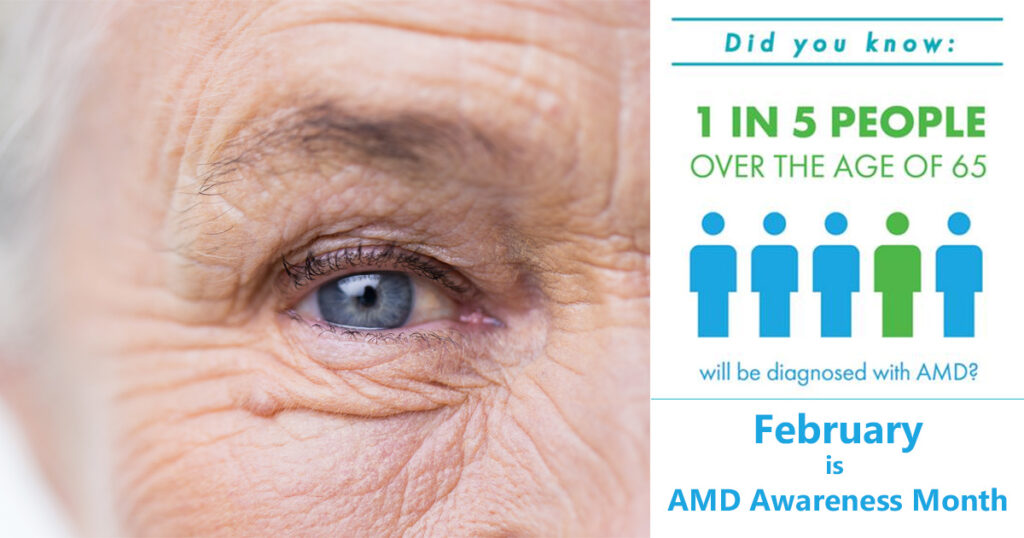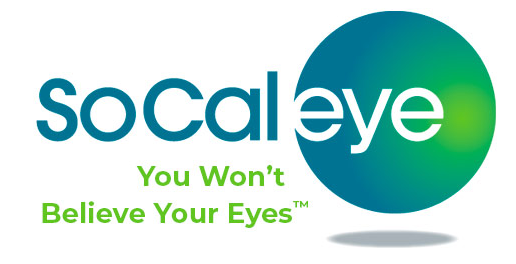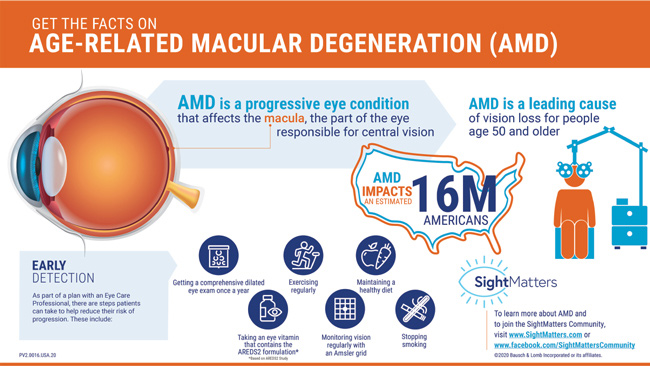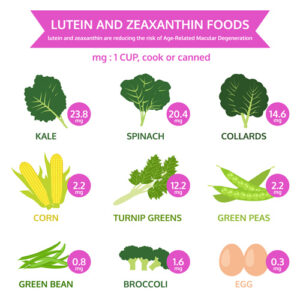
February is Age Related Macular Degeneration Awareness Month. It is estimated that over 16 million Americans suffer from AMD and it is considered to be the leading cause of blindness in the developed word. AMD can, however, be easily detected and there are ways to reduce or slow its onset. Early detection and treatment are critical. SoCal Eye doctors are leaders in AMD treatment in Long Beach, Garden Grove and Huntington Beach and share Macular Degeneration Facts and expertise in this AMD Awareness month.
18 facts about age-related Macular Degeneration.
When was February designated AMD Awareness Month?
Prevent Blindness, a leading volunteer eye health and safety organization, established AMD Awareness Month in 2008. The mission behind this campaign is to raise AMD awareness and promote regular testing. When caught in its initial stages, we’re better able to prevent vision loss that occurs as the disease progresses. Prevent Blindness – AMD. In 2022 Prevent Blindness joined with Bausch & Lomb to create the SightMatters Campaign. SightMatters- Learn More
Macular Degeneration Prevalence.
Too many patients seek AMD Treatment only after experiencing irreversible vision loss
According to recent studies, as many as 78% of patients are first diagnosed with age-related Macular Degeneration (AMD) having already suffered irreversible vision loss. Nearly half of them are first diagnosed with an acuity of 20/200 or worse. Early Detection and Treatment can prevent or slow vision loss.
Does Macular Degeneration cause blindness?
AMD is the leading cause of blindness. A recent study published in British Journal of Ophthalmology found that Macular Degeneration has become the most important cause of blindness. Age-related macular degeneration accounts for 8·7% of all blindness worldwide and is the most common cause of blindness in developed countries particularly in people older than 60 years
Is Macular Degeneration Increasing?
The number of people worldwide living with Macular Degeneration is expected to increase from 190 million to 288 million by 2040 and in the US numbers are expected to increase to over 20 million by 2050.
Macular Degeneration vs Glaucoma
AMD is more prevalent than glaucoma and dry eye combined. According to the American Academy of Ophthalmology, dry eye affects 4.88 M US adults over age 40 and glaucoma affects 2.7M. Meanwhile, AMD affects 16M Americans, making it much more prevalent than dry eye and glaucoma combined.
Macular Degeneration: Wet vs Dry
Wet AMD vs Dry AMD. Although it affects only 10-15% of those who have the condition, wet AMD accounts for approximately 90% of the severe vision loss caused by Macular Degeneration. In this Aged stage, the body grows new blood vessels to facilitate oxygen transport to the retina, but these are very fragile and leak fluid, making the retina “wet.” This fluid pools in the retina, causing damage and irreversible vision loss.
Macular Degeneration Symptoms.
What are the first signs of AMD?
The impairment of night vision is the first sign of the possible onset of Age Related Macular Degeneration The loss of photoreceptor cells involved in night vision, occurs before structural physiological changes are visible upon examination. Cholesterol accumulation, a trademark physical characteristic of early AMD, causes three major problems in the retina: inflammation, oxidative stress, and disruption of oxygen and nutrition supplied to the outer retina. The cells responsible for our eyes’ ability to adjust from bright light to darkness die as a result of Vitamin A deficiency, making impaired dark adaptation the first functional symptom of AMD.
Is vision acuity usually affected in earlier stages of Macular Degeneration?
Changes in visual acuity usually signify that AMD has progressed to intermediate or late stage disease. Because of this, 37% of AMD patients have visual acuity of 20/200 by the time they first seek medical attention.
Macular Degeneration Risk Factors.
What is the leading risk factor for Aged Macular Degeneration?
Current smokers carry a 2.5 to 4.8 times higher risk than non-smokers for developing AMD
Does sunlight exposure increase the risk for Macular Degeneration?
Epidemiological evidence suggests that chronic sunlight exposure increases the risk of incident AMD and its progression. There are, therefore, significant benefits of wearing protective eyewear.
Is High cholesterol a risk factor for AMD?
People with elevated blood cholesterol levels are considered to be at higher risk for wet AMD. Other risk factors for AMD include age, ethnicity, family history, obesity, and smoking.
Age, ethnicity, and gender play a role in the development of AMD
Not only does the risk of AMD increase with age, data suggests ethnicity and gender also influence the likelihood of developing the disease. According to the National Eye Institute, AMD is more prevalent among white Americans as compared to other races. Perhaps partly due to life expectancy discrepancies, 65% of AMD cases in the US were women in 2010.
Reducing Macular Degeneration Risk.
Macular Degeneration – How to prevent?
An active lifestyle has been shown to reduce the risk of progression to Aged AMD. AMD patients who walk one or more blocks per day are 50% less likely to see their AMD progress than sedentary counterparts
Macular Degeneration Vitamins
Supplements with high levels of vitamins C, E, lutein, and zeaxanthin, which are all antioxidants, and the minerals zinc and copper may help slow the progress of advanced age-related macular degeneration (AMD) and delay vision loss if the patient already have moderate or severe AMD.
Macular Degeneration Diet
Studies suggest that subjects who regularly consume a Mediterranean-like diet carry an overall lower risk of development of Aged AMD as compared to those who regularly consume a traditional Western diet. A recommendation should be made that patients avoid traditionally “Western” dietary pitfalls (high glycemic index foods, high-fat dairy products, fried foods, and processed meats), and instead, follow healthier eating styles like the Mediterranean diet. This diet includes high intake of fruits, legumes, vegetables, nuts, seeds, and other grains; olive oil as the main source of monounsaturated fat; dairy products, fish, poultry, and wine in moderate amounts; and limited intake of red and processed meats.
Does disease management reduce the risk of AMD?
Based on epidemiological studies, several systemic conditions carry an increased risk of developing AMD. Keeping cardiovascular disease, diabetes, high cholesterol, and obesity in check may help preserve vision, as well as improve quality of life.
Economic Impact of Macular Degeneration.
A study in 2005 estimated the loss in gross domestic profit in the US associated with AMD to be $24.4 billion ($34.1 billion in US $ 2012). This macroeconomic impact considers both loss of employment and loss of salary associated with AMD.
SoCal Eye: Age Related Macular Degeneration Facts, Long Beach, Garden Grove, Huntington Beach
The key to success with Treatment for Age Related Macular Degeneration is Early Detection. If it can be caught early through a Comprehensive Eye Exam, the progression of the disease can be slowed dramatically. SoCal Eye doctors are the Macular Degeneration Specialists for Long Beach, Garden Grove and Huntington Beach. Schedule an Appointment today at LAKEWOOD (562) 531-2020 | LOS ALAMITOS (562) 598-7728 or send us an Online Consultation Request[/vc_column_text][/vc_column][/vc_row]





